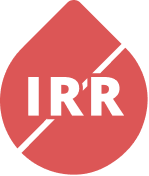Chlorhexidine Diacetate
What is it?
Chlorhexidine Diacetate is used as an antimicrobial or antibacterial agent in a variety settings.
How can I avoid it?
Contact avoidance requires reading labels, package inserts, Material Safety Data Sheets (MSDS), and on occasion, direct communication with the manufacture.
Uses:
- Animal disinfectant
- Athlete’s foot treatment
- Contact lens care products
- Disinfection solutions
- Veterinary settings
- Egg handling centers
- Agriculture premises
- Hand cleanser (liquid)
- Medications
- Pesticide, disinfectant, bacteriocide, and virucide
- Skin Care Products / Cosmetics
- Eye drops
- Feminine hygiene sprays
- Mouthwash and gum treatment
- Toothpaste
- Surgical scrub and operative site cleanser (Hibicleans®, Surgiprep-CHX®, etc)
- Urologic and gynecologic procedures
- Uterine antiseptics
- Wound cleanser
Other names for Chlorhexidine Diacetate:
- 1,1’-Hexamethylenebis(5-(p-chlorophenyl)biguanide) diacitate
- 1,6-bis(n-(p-Chlorophenyl)-n5-biguanido)hexane
- 1,6-bis(n5-p-Chlorophenyl-n’-diguanido)hexane
- 1,6-di(4’Chlorophenyldiguanido)hexane
- Chlorasept 2000
- Chlorhexidine diglucanate
- N,N”-bis(4-Chlorophenyl)-3,12-diimino-2,4,11,13-tetraazatetradecanediimidamide
- Nolvasan
- Sterilon
- Chlorohexadine acetate
- Arlacide A
- Bactigras
- Tetrazatetradecanediimidamide,N,N”-bis(4-chlorophenyl)-3,12-diimino-,diacitate
Potential cross-reacting/co-reacting substances:
- Chlorhexidine Digluconate





























